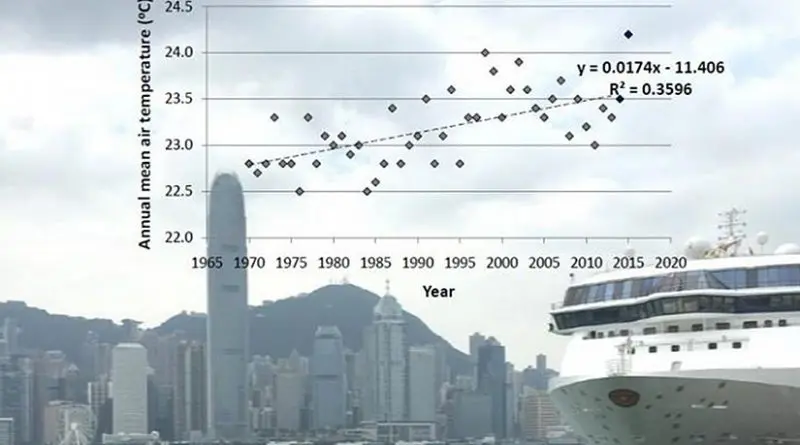How Much Warmer Has Hong Kong’s Urban Area Become During Past 4 Decades?
Scientists from Macao Polytechnic Institute are pioneers in exploring urban temperature in Hong Kong using seasonal econometric models. In particular, the characterization of the urban temperature trend was investigated using a seasonal unit root analysis of monthly mean air temperature data over the period of January 1970 to December 2013.
“The seasonal unit root test makes it possible to determine the stochastic trend of monthly temperatures using an autoregressive model,” said Prof. Wai Ming To. “We found that Hong Kong’s urban mean air temperature has increased by 0.169°C per 10 years over the past four decades using monthly temperature data, or 0.174°C per 10 years using annual temperature data, and the trend is likely to persist.”
The increase in Hong Kong’s urban mean air temperature was higher than the increase in global mean air temperature [0.13°C (10 yr)-1 using data from 1956 to 2005, or 0.07°C (10 yr)-1 between 1906 and 2005 due to global warming].
The model of monthly temperature obtained from the seasonal unit root analysis was able to explain 95.9%of the variance in the measured monthly data–much higher than the variance explained by the ordinary least-squares model using annual mean air temperature data and other studies alike. The model accurately predicted monthly mean air temperatures between January 2014 and December 2015, with a root-mean-square percentage error of 4.2%.
By analyzing the monthly air temperatures recorded at an urban site and a rural site, it was found that the urban heat island effect led to the urban site being on average 0.865°C warmer than the rural site over the past two decades. Besides, it was shown that the increase in annual mean air temperature was significantly associated with the increase in population, gross domestic product, urban land use, and energy use.

